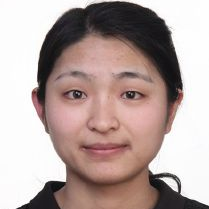Application of Neural Networks in Image Classification
A special issue of Electronics (ISSN 2079-9292). This special issue belongs to the section "Computer Science & Engineering".
Deadline for manuscript submissions: closed (30 September 2021) | Viewed by 14685
Special Issue Editors
Interests: machine vision; object detection and classification based on deep learning; defect inspection in factory process
Special Issue Information
Dear Colleagues,
Artificial neural network (ANNs) research and its applications have grown tremendously in the last decade due to the enhancement of computers’ operational capability, availability of labeled data, and advances in learning algorithms. Classification as a fundamental task has made great strides and been employed in many other tasks. This Special Issue aims to provide a platform for researchers to share state-of-the-art developments in the field. The scope of this Special Issue is deep learning, machine vision, and application of neural networks in a wide range of real-world problems, such as object tracking, web intelligence, remote sensing images, action recognition, and segmentation and classification.
The topics of interests include but are not limited to the following topics:
- Image classification based on deep learning algorithms
- Deep learning theory
- Deep generative model
- Multitask, transfer, and meta learning
- Deep reinforcement learning
- Image based object tracking using deep learning
- Anomaly detection
- Real-world applications based on deep learning
- Survey for deep learning-based image classification
Prof. Dr. Dong-Joong Kang
Prof. Dr. Zhu Teng
Guest Editors
Manuscript Submission Information
Manuscripts should be submitted online at www.mdpi.com by registering and logging in to this website. Once you are registered, click here to go to the submission form. Manuscripts can be submitted until the deadline. All submissions that pass pre-check are peer-reviewed. Accepted papers will be published continuously in the journal (as soon as accepted) and will be listed together on the special issue website. Research articles, review articles as well as short communications are invited. For planned papers, a title and short abstract (about 100 words) can be sent to the Editorial Office for announcement on this website.
Submitted manuscripts should not have been published previously, nor be under consideration for publication elsewhere (except conference proceedings papers). All manuscripts are thoroughly refereed through a single-blind peer-review process. A guide for authors and other relevant information for submission of manuscripts is available on the Instructions for Authors page. Electronics is an international peer-reviewed open access semimonthly journal published by MDPI.
Please visit the Instructions for Authors page before submitting a manuscript. The Article Processing Charge (APC) for publication in this open access journal is 2400 CHF (Swiss Francs). Submitted papers should be well formatted and use good English. Authors may use MDPI's English editing service prior to publication or during author revisions.
Keywords
- Artificial Intelligence
- Deep learning (AI) algorithm
- Deep learning (AI) architecture
- Deep learning applications
- Intelligent robots
- Intelligent systems
- Machine learning
- Machine vision
- Neural networks
- Parallel processing
- Web intelligence applications and search






